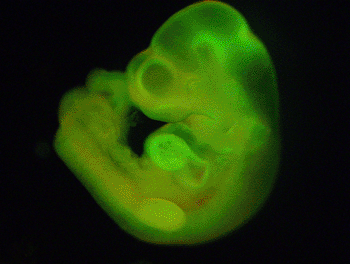Embryonic Stem Cells Created Without Embryo
By LabMedica International staff writers
Posted on 11 Feb 2014
US and Japanese researchers have demonstrated that any mature adult cell, known as a somatic cell, has the potential to change into the equivalent of an embryonic stem cell.Posted on 11 Feb 2014
Scientists have had great expectations for their use in treating a wider range of diseases because human embryonic stem cells are pluripotent. However, the acquisition of human embryonic stem cells from an embryo can cause the destruction of the embryo, consequently raising ethical concerns. In 2006, researchers introduced an alternative to collecting embryonic stem cells called induced pluripotent stem (iPS) cells.

Image: Researchers have created embryonic-like stem cells with the ability to develop into any of the dozens of highly specialized cells of the body, ranging from cardiac-muscle cells to the nerve cells of the brain and spinal cord (Photo courtesy of Brigham and Women’s Hospital / RIKEN Center for Developmental Biology).
The investigators revealed that it was possible to send a normal adult cell back to an undifferentiated, pluripotent stem cell state by introducing genetic material into the cell, a process that changes the original state of the cell. To avoid the use of embryonic stem cells, other scientists have focused more on the use of adult stem cells, but the use is of these cells is limited because, dissimilar to embryonic stem cells that grow into any sort of mature cell, adult stem cells can only grow into specific cell types.
The new findings were published in the January 30, 2014, issue of the journal Nature. Researchers from Brigham and Women’s Hospital (BWH; Boston, MA, USA) in collaboration with the RIKEN Center for Developmental Biology (Kobe, Japan) have shown in a preclinical model, a novel and unique way that cells can be reprogrammed, an event they termed stimulus-triggered acquisition of pluripotency (STAP). This process, significantly, does not require introducing new outside DNA, the process typically used to persuade adult cells back into a state of pluripotentency.
“It may not be necessary to create an embryo to acquire embryonic stem cells. Our research findings demonstrate that creation of an autologous pluripotent stem cell—a stem cell from an individual that has the potential to be used for a therapeutic purpose—without an embryo, is possible. The fate of adult cells can be drastically converted by exposing mature cells to an external stress or injury. This finding has the potential to reduce the need to utilize both embryonic stem cells and DNA-manipulated iPS cells,” said senior author Charles Vacanti, MD, chairman of the department of anesthesiology, perioperative and pain medicine and director of the laboratory for tissue engineering and regenerative medicine at BWH and senior author of the study. “This study would not have been possible without the significant international collaboration between BWH and the RIKEN Center,” he added.
Researchers, drawing from the ability of a plant callus—a node of plant cells that is created by injuring an existing plant, to grow into a new plant—hypothesized that any mature adult cell, once differentiated into a specific cell type, could be de-differentiated through a natural process that does not require inserting genetic material into the cells. “Could simple injury cause mature, adult cells to turn into stem cells that could in turn develop into any cell type?” postulated the investigators.
Researchers theorized that these findings raise the possibility that unknown cellular functions that are turned on through external stress, may set mature adult cells free from their current responsibilities and allow them to return to their naïve cell state. “Our findings suggest that somehow, through part of a natural repair process, mature cells turn off some of the epigenetic controls that inhibit expression of certain nuclear genes that result in differentiation,” said Dr. Vacanti.
The researchers noted that the next step is to investigate this process in more advanced mammals and finally in humans. “If we can work out the mechanisms by which differentiation states are maintained and lost, it could open up a wide range of possibilities for new research and applications using living cells. But for me the most interesting questions will be the ones that let us gain a deeper understanding of the basic principles at work in these phenomena,” said first author Haruko Obokata, PhD.
If this same process can be demonstrated in human cells, then someday, through a skin biopsy or blood sample, without the need for genetic manipulation, researchers may be able to generate embryonic stem cells specific to each individual, which then could be used to create tissue without having to insert any outside genetic material into that cell, creating endless possibilities for therapeutic options.
Researchers reported that there are still more questions about the process. Dr. Vacanti and colleagues are interested in examining why and how stressful stimuli drive reprogramming to create the pluripotent state.
Related Links:
Brigham and Women’s Hospital
RIKEN Center for Developmental Biology













